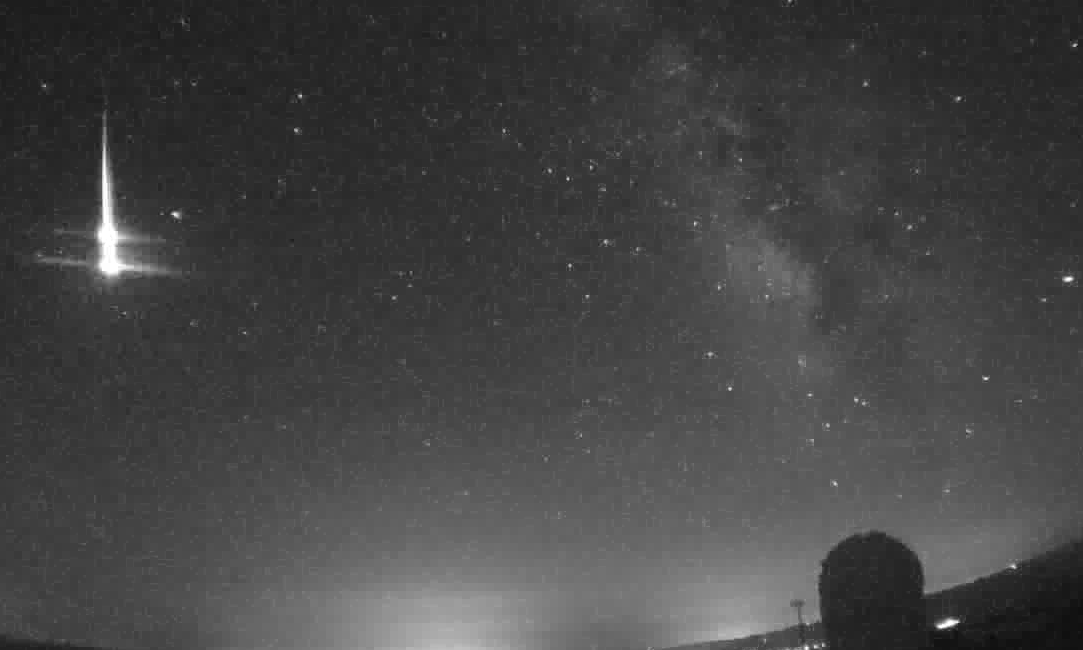
On the night from June 12th to 13th 2021, two firewalls were registered from SMART Project’s detectors operated at Calar Alto (Almería), La Sagra (Granada), Sierra Nevada (Granada), La Hita (Toledo) and Seville observatories.

 In this case, three of the Calar Alto Observatory (Almería) external surveillance cameras could also record both object.
In this case, three of the Calar Alto Observatory (Almería) external surveillance cameras could also record both object.
F irst fireball took place at 22h05 UT of June 12th (00h05 local time of June 13th) while second one happened at 01h45 UT.
irst fireball took place at 22h05 UT of June 12th (00h05 local time of June 13th) while second one happened at 01h45 UT.
Following the preliminary analysis carried out by Professor José María Madiedo (Instituto de Astrofísica de Andalucía IAA-CSIC), and SMART project's PI, both were cometary events. First one was caused by a rock detached from a comet which impacted against our atmosphere at an estimated speed of 54.000 km/h. Speed of the second one was about 145.000 km/h.
The luminous part of the first object started at an altitude of 89 km above the east part of Badajoz province in Extremadura region (Southwest Spain). The fireball moved then southwestward and finished at an altitude of 40 km above the ground.
The luminous part of the second fireball started at an altitude of 106 km above Mediterranean Sea, just in front of Almería’s southeast coasts. Then the object moved southwestward and finished at an altitude of 70 km above the sea.
The images on the top right show the paths these fireball followed above Extremadura and Mediterranean Sea. On the top left one, the image shows a stacked image of the double fulguration the second fireball had. On the right part of that image, you can clearly see the Milky Way just above the silhouette of the 3.5m telescope.
Below are the videos registered from the Calar Alto Observatory (Almería) external webcams. The first two videos show the second fireball that happened above Mediterranean Sea. The last video shows the fireball that took place northwest of Calar Alto Observatory above Extremadura skies. It is nice to see on the first video the wonderful skies at Calar Alto Observatory in Almería.
Calar Alto (CAHA) fireball detection station, together with the one at the Observatory of Sierra Nevada (IAA-CSIC) and others placed at different locations in Spain, are part of the S.M.A.R.T. project led by Professor José María Madiedo (IAA) to track that kind of objects. Specifically, Calar Alto (CAHA) station and the one at Sierra Nevada (IAA-CSIC) constitute a collaboration agreement between the IAA researcher José María Madiedo and both institutions.
 English (UK)
English (UK)
